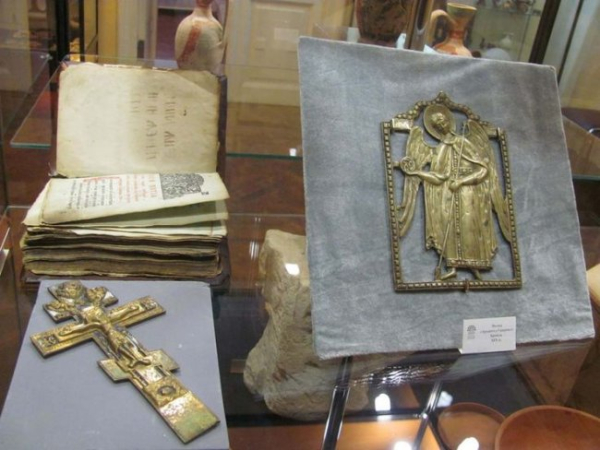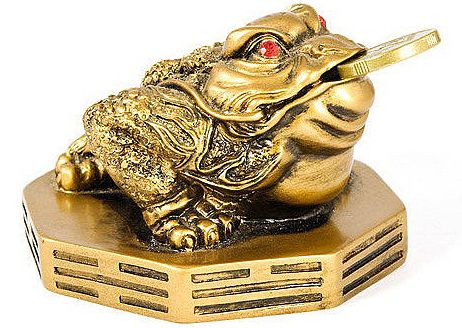
When discussing the irretrievably lost treasures of World War II, the Amber Room immediately comes to mind. However, the amber miracle was only a small part of what was lost. Historians estimate the losses were significant: approximately 1 million ancient books, priceless museum exhibits, and a huge number of manuscripts. The fate of most of the missing treasures remains a mystery. For example, few people know that before the war, the Kerch Museum of Antiquities housed valuable exhibits—golden objects from Gothic burials, coins of the Pontic king Mithridates the Great, Scythian jewelry, and a large number of jewels dating to later periods.
In September 1941, the Kerch Museum was preparing its exhibits for evacuation. It was at this time that SS Chief Heinrich Himmler created a special task force tasked with finding these treasures by any means necessary and bringing them back to Germany. Specialists from the most mysterious and mystical fascist organization, the Ahnenerbe, were recruited to help search for the treasures. This organization spearheaded the study of ancient Germanic history and actively searched for objects—the “ancestral heritage.” It was created immediately after Hitler came to power in 1933. The best university scholars who adhered to Nazi views were recruited to work for the Ahnenerbe. With the help of these specialists, numerous excavations were conducted in various parts of the world: Norway, the Middle East, and Tibet. The Nazis persistently searched for their “roots” to justify the German nation's right to world domination. In 1937, the Ahnenerbe came under the complete control of Himmler. When the Nazis occupied Ukraine, the Ahnenerbe began researching all the ancient burial mounds and settlements in the Northern Black Sea region. They were interested in the legacy of one group of ancient Germanic tribes—the Goths, who had developed their own developed culture in the third century AD.
Historians believe the Goths came to Crimea from the territory along the lower Vistula River. The Greek historian Poseidonius called the Goths “Germans,” and Cornelius Tacitus described the tribe as having “hard blue eyes, blond hair, and tall bodies.” The Goths arrived in Crimea armed with swords, partially exterminating the indigenous Crimean population and assimilating the rest. Over time, they became the most dominant force in Crimea. The Goths inhabited the Crimean Peninsula longer than any other ethnic group. During World War II, the Nazis exploited this fact to claim Crimea as part of Germany. They even coined a name for their “new territory”—Gotengau—and planned to resettle 5 million Germans on the peninsula by 1960.
The Martha Treasure, housed in the Kerch Museum, consisted of objects found in a rich Gothic burial. German museums at the time held no artifacts related to Ostrogothic culture. The collection's crown jewel was a large gold diadem, formerly owned by the Gothic queen Thedea, who reigned in the first century CE. Finding and taking this collection from the Russians was the mission assigned to Himmler's most notorious thugs.
In preparation for the evacuation of the museum's valuables from the Kerch Museum, all exhibits were carefully packed into 19 crates. In addition, the most valuable collection was placed in a large plywood suitcase (the “golden suitcase”). The suitcase contained:
– coins of the Mithridates period, Bosporan, Pontic from the so-called Taritak treasure found in 1935;
– a diadem from the Marfa treasure, gold, decorated with garnets and carnelians, thin gold earrings and buckles;
– gold plates decorated with images of ancient Scythians, precious plaques with images of young warriors and a sphinx;
– a medieval collection of bracelets, signet rings, buckles, medallions with images of ancient Greek gods, masks, gold plates, petals and needles;
– coins from Panticapaeum made of red gold, coins of the Roman and Greek periods, Byzantine, Russian, Genoese, Turkish coins, icons, medals and much more.
In late September, all the boxes and the “golden suitcase” were safely delivered to the port of Taman, located on the Kuban coast of the Kerch Strait. The Kerch treasures were transported first to the city of Krasnodar and then to Armavir. In the summer of 1942, German bombers began bombing cities in Kuban. During the raid, a bomb hit the building where 19 boxes containing the exhibits were stored. A fire broke out. All the boxes' contents burned to the ground, but the “golden suitcase” survived, as it was stored in another building—the city executive committee building. When the Kerch museum's valuables arrived in Armavir, the suitcase was opened in the city executive committee building, and the contents were checked against the inventory in the presence of a special commission—everything was found to be in place. The suitcase was sealed and placed in the city executive committee's secure storage facility.
In August 1942, the Germans entered Armavir. Armavir City Executive Committee employee Anna Avdeykina managed to smuggle the “golden suitcase” out of the city at the last minute. Here's what this courageous woman told us about her rescue.
When Soviet troops withdrew from Armavir, the city became eerily deserted. The doors of the city executive committee building stood wide open, and a wind blew through the empty corridors. Despite the fact that many documents had been removed, the “golden suitcase” remained in the room. Perhaps it had been forgotten in the hustle and bustle. Besides, its appearance was unpresentable. Anna Avdeykina, with the help of her nephew, despite the brutal bombardment, pulled the suitcase from the collapsing city executive committee building. A thin, frail woman and a child lugged the 80-kilogram suitcase filled with valuables to the evacuation assembly point, hoping to get it out of the city in time. Only by chance did they find the chairman of the city executive committee in the chaos, who was able to load the “golden suitcase” and its savior onto practically the last truck leaving the city. En route, the car was shot at, but despite this, it reached the village of Spokoinaya. There, Anna handed over the precious suitcase to the head of the State Bank branch. She then mingled with a crowd of refugees trying to get as far away from the city as possible. But they didn't get far; they were detained by German machine gunners. Anna destroyed her documents to prevent the Germans from learning that she was an employee of the Armavir City Executive Committee and the inventory of the jewelry in the “golden suitcase.” She managed to escape from the filtration camp and worked in the rear until Armavir's liberation.
After returning home, she was told news related to the “golden suitcase.” It turned out that during the city's occupation, the Nazis had come for her and thoroughly searched her entire house and the surrounding area. They questioned everyone about where Anna had gone, who had helped her, and, most importantly, what belongings she had taken with her. They were particularly interested in a certain suitcase that might have been among her belongings. Most likely, there was a traitor in the city who reported to the Germans that Anna had left the city hall with a suitcase. The Gestapo immediately realized that this was the “golden suitcase” the special Sonderkommando had been searching for.
Unfortunately, the Germans soon arrived in the village of Spokoinaya. The director of the Spokoinaya State Bank, Yakov Loboda, defected to the partisans and took the “golden suitcase” with him. Art historian E. Konchin, who spent a long time searching for the “golden suitcase,” wrote that only the leaders of the partisan detachment knew about the treasures and understood their full responsibility for the safety of the people's property.
In December, the partisan detachment suffered heavy losses, and command decided to disband it. Personal weapons, equipment, and documents were buried in various locations. Only two people knew about each hiding place. Unfortunately, it's unknown who hid the “golden suitcase”; perhaps Loboda himself did it.
Yakov Loboda, escaping from encirclement, was ambushed and captured by the Germans. He was sentenced to death, but was allowed to see his wife. He may have mentioned the location of the suitcase, but his grief-stricken wife couldn't even understand what he was talking about.
Yakov Loboda and his comrades were executed, and the traces of the “golden suitcase” were lost. After the Germans were driven out of Kuban in 1943, it was discovered that the “golden suitcase” itself had been found at a partisan camp, but it contained only a few pieces of jewelry. About 700 pieces of jewelry were missing, including the famous diadem of the Tsarina Goth! A special search committee was established, as suspicion immediately fell on the partisans. But interrogations and arrests yielded no results—the treasures were gone forever.
It was a real shock when Soviet soldiers discovered some of the valuables from the Kerch Museum in a German castle after the war. And just recently, in 2006, in the state of Hesse, police discovered 500 coins from the Panticapaeum and Bosporan Kingdom periods. For two years, Crimean museum workers proved the precious coins' “Kerch” origin. In 2009, the coins were returned to the Kerch Museum, and now the museum's numismatic collection is the most valuable in the world. But these coins weren't part of the “golden suitcase” collection…
In 1946, boys from the village of Spokoinaya found a gold buckle, which, judging by the description, was among the treasures of the “golden suitcase.” Its fate is unknown—it disappeared! This is highly suspicious, although it is entirely possible that, despite the end of the war, the Ahnenerbe went underground and its agents are still operating in various countries. They would have had no trouble immediately after the war continuing the search for the “golden suitcase,” using their vast financial resources and agents in the USSR.
In the Soviet Union, the state did not search for the treasures of the Kerch Museum. Everything known about the “golden suitcase” today is the result of the work of enthusiasts.
It is possible that the Ahnenerbe agents did indeed achieve results in their search for the Goth treasures from the “Kerch” collection, and then the priceless antiquities will be lost forever to Russian historical science.
Today, the most valuable items from the “golden suitcase,” unique cultural monuments of the world's ancient peoples, are officially considered irretrievably lost. One can only hope that they will one day be found.





